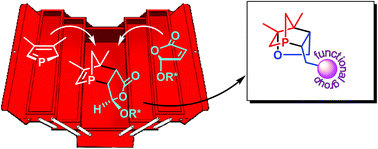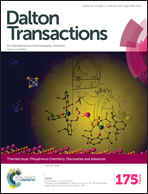P-chiral 1-phosphanorbornenes: from asymmetric phospha-Diels–Alder reactions towards ligand design and functionalisation†‡
Abstract
The principle of stereotopic face differentiation was successfully applied to 2H-phospholes which undergo a very efficient and highly stereoselective Diels–Alder reaction giving phosphorus-chiral 1-phosphanorbornenes with up to 87% yield. The observed reaction pathway has been supported by theoretical calculations showing that the cycloaddition reaction between 2H-phosphole 3a and the dienophile (5R)-(−)-menthyloxy-2(5H)-furanone (8) is of normal electron demand. Optically pure phosphanes were obtained by separation of the single diastereomers and subsequent desulfurisation of the sulfur-protected phosphorus atom. Finally, divergent ligand synthesis is feasible by reduction of the chiral auxiliary, subsequent stereospecific intramolecular Michael addition, and various functionalisations of the obtained key compound 13a. Furthermore, the unique structural properties of phospanorbornenes are presented and compared to those of phosphanorbornanes.

- This article is part of the themed collection: Phosphorus Chemistry: Discoveries and Advances

 Please wait while we load your content...
Please wait while we load your content...